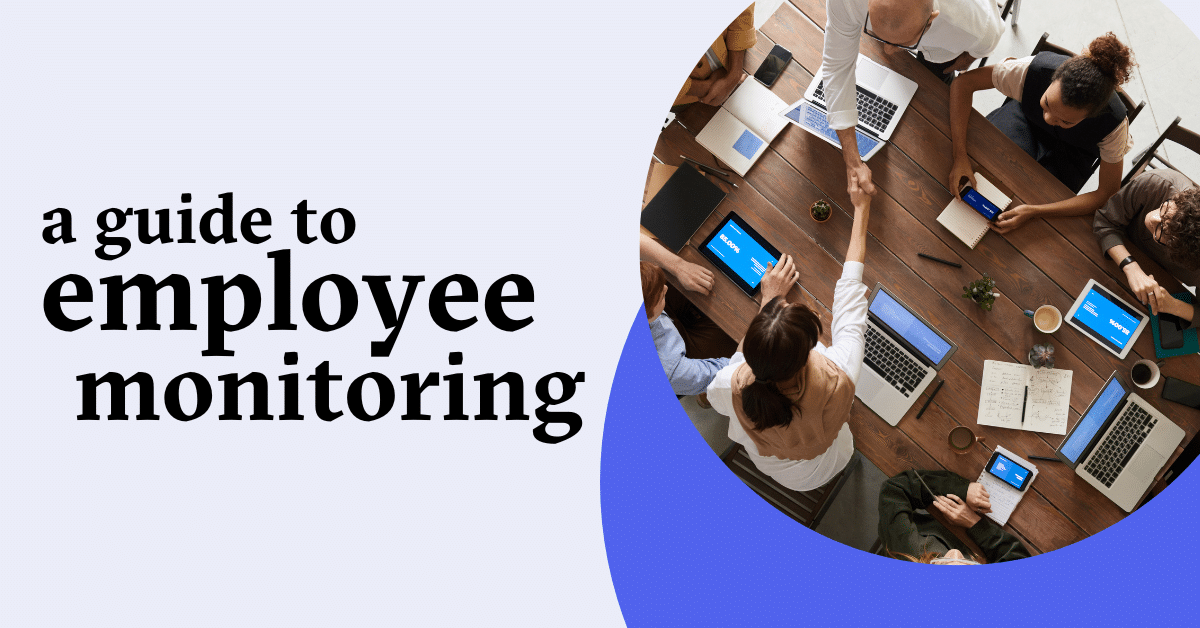A Guide To Employee Monitoring
September 18, 2022
If you’re a business owner, you know that employee monitoring is important to running a successful business. But, as a business owner and not a security expert, it can take a lot of work to know exactly how much employee monitoring is enough, or what type of monitoring might be right for your organization. A good place to start is by understanding what types of monitoring are available and how each can help improve the performance of your employees.
How Do Companies Monitor Their Employees?
Monitoring software: Monitoring software can be installed on a company computer or used to monitor mobile devices. Employees are often required to use their devices for work purposes, so this is only sometimes an option. It’s important to know what monitoring software you’re using and how it works before installing anything on your employee’s computers or phones.
Video cameras: Some companies use video cameras in the workplace as a way of monitoring activity and behavior. Because these cameras capture more than just audio (like keystrokes), they’re often more effective at detecting misconduct than other methods, such as word processing software or keystroke logging. Video cameras are also useful if you want to enforce rules against eating food during working hours—you won’t have any problem catching someone sneaking chips when they take a bite!
Audio recording: While there aren’t many situations where audio recording is necessary for employee monitoring, there are some instances where it could come in handy when trying to determine whether or not someone has violated company policies related to social media usage or confidential information sharing policy violations (for example).
Why Monitor Employees?
- Prevent fraud and theft. Employee monitoring can help you prevent employees from stealing or defrauding your business by catching them in the act of doing so. You also won’t have to worry about people taking advantage of your company if you set up alerts for common issues such as unauthorized access to sensitive data or accounts, purchases over a certain limit without approval, etc.
- Ensure employee safety. Employee monitoring can ensure that employees are safe during the workday by letting managers know about any unusual activity on their computers (for example, printing out confidential information) or abnormal behavior (for example: entering an unauthorized code). This allows for swift action against potential threats before they become real ones! If there are any concerns about physical harm as well—such as someone having access to weapons—you’ll be able to take appropriate measures before an incident occurs instead of after it happens.
- To prevent damage to company property. Employees are human, and as such, they make mistakes. Sometimes those mistakes cause damage to company property. Employee monitoring helps managers know if an employee is not following the rules or has damaged something in the workplace so they can take action before it gets worse.
- To prevent injury to employees and customers. Employees should never be allowed to work in dangerous conditions or when injured; otherwise, they could seriously hurt themselves or someone else (or both). Employee monitoring helps identify unsafe situations so managers can fix them before an injury occurs or give workers time off if needed.
- Compliance with company policies: Employees must follow the company’s policies so that everyone stays safe while doing their jobs well at all times!
Are There Laws For Employee Monitoring Laws?
There are laws governing employee monitoring, which differ depending on where you live. In the United States, many states have passed laws that regulate how employers can use surveillance devices to monitor their employees. These laws were designed to protect employees and employers from potential legal issues that could arise from using these devices. For example, if an employer uses a surveillance device to spy on an employee while at work but not during their off-hours, he may be guilty of invasion of privacy—which is illegal in most countries.
Conclusion
The good news is that plenty of solutions are out there to help you manage your employees’ performance. If you take the time to look around and do some research, you might be surprised at how many options are available.
share this blog
STAY CONNECTED
Sign up for our newsletter for the latest Tesseon information.
Related Blogs
What our clients are saying about us
Disclaimer: The information provided on this blog page is for general informational purposes only and should not be considered as legal advice. It is advisable to seek professional legal counsel before taking any action based on the content of this page. We do not guarantee the accuracy or completeness of the information provided, and we will not be liable for any losses or damages arising from its use. Any reliance on the information provided is solely at your own risk. Consult a qualified attorney for personalized legal advice.

